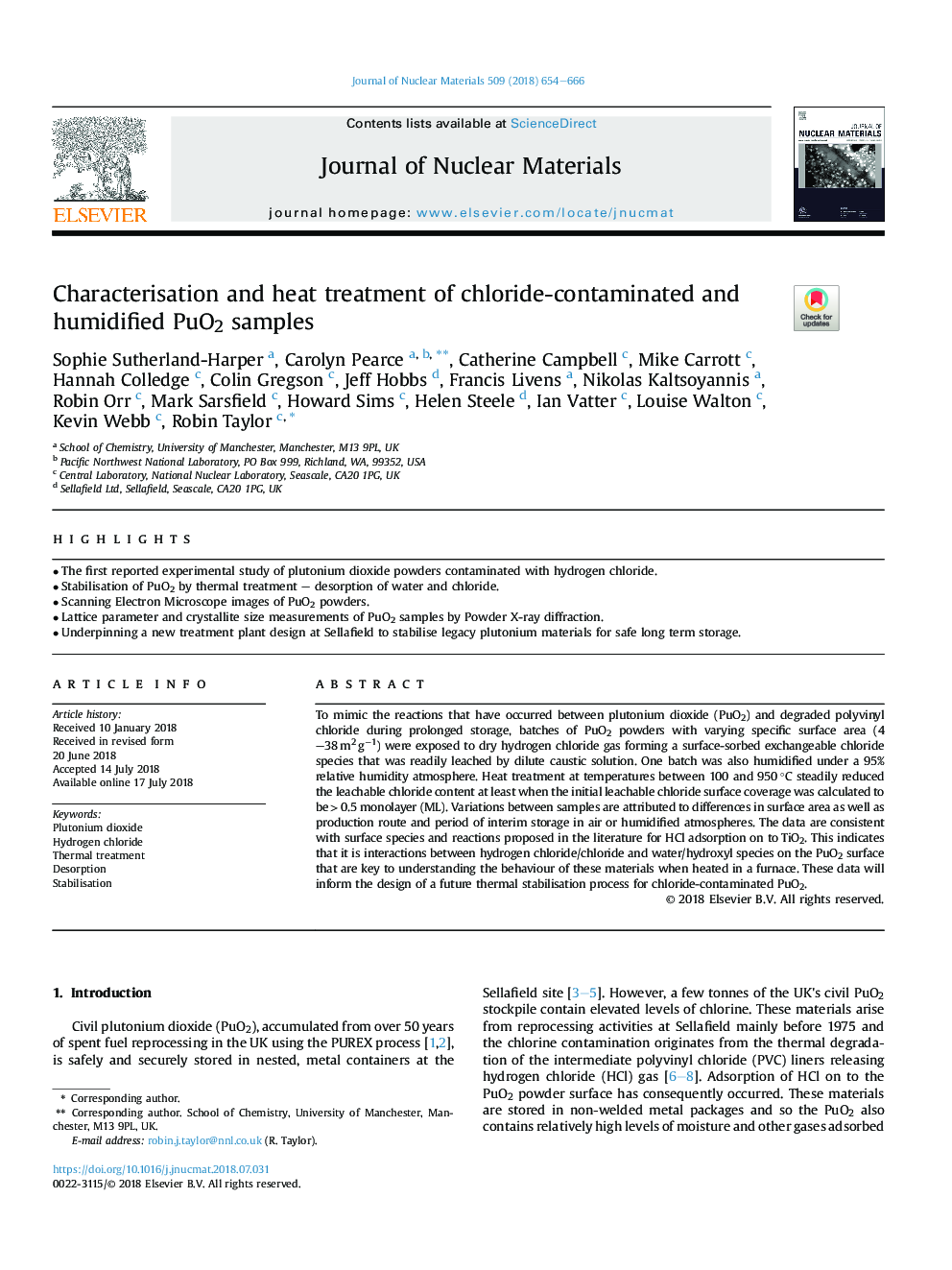| Article ID | Journal | Published Year | Pages | File Type |
|---|---|---|---|---|
| 7963031 | Journal of Nuclear Materials | 2018 | 13 Pages |
Abstract
To mimic the reactions that have occurred between plutonium dioxide (PuO2) and degraded polyvinyl chloride during prolonged storage, batches of PuO2 powders with varying specific surface area (4-38â¯m2â¯gâ1) were exposed to dry hydrogen chloride gas forming a surface-sorbed exchangeable chloride species that was readily leached by dilute caustic solution. One batch was also humidified under a 95% relative humidity atmosphere. Heat treatment at temperatures between 100 and 950â¯Â°C steadily reduced the leachable chloride content at least when the initial leachable chloride surface coverage was calculated to beâ¯>â¯0.5 monolayer (ML). Variations between samples are attributed to differences in surface area as well as production route and period of interim storage in air or humidified atmospheres. The data are consistent with surface species and reactions proposed in the literature for HCl adsorption on to TiO2. This indicates that it is interactions between hydrogen chloride/chloride and water/hydroxyl species on the PuO2 surface that are key to understanding the behaviour of these materials when heated in a furnace. These data will inform the design of a future thermal stabilisation process for chloride-contaminated PuO2.
Related Topics
Physical Sciences and Engineering
Energy
Nuclear Energy and Engineering
Authors
Sophie Sutherland-Harper, Carolyn Pearce, Catherine Campbell, Mike Carrott, Hannah Colledge, Colin Gregson, Jeff Hobbs, Francis Livens, Nikolas Kaltsoyannis, Robin Orr, Mark Sarsfield, Howard Sims, Helen Steele, Ian Vatter, Louise Walton, Kevin Webb,
